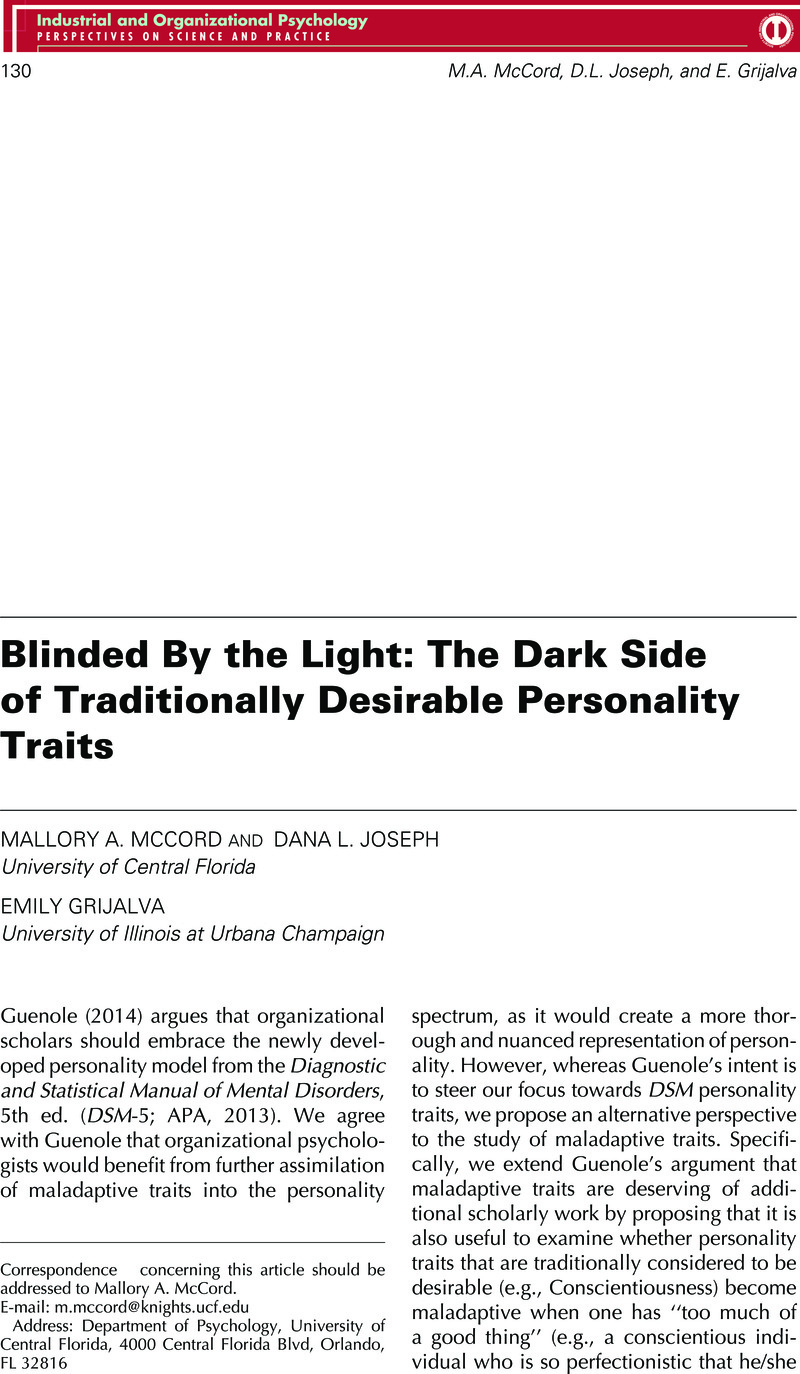Crossref Citations
This article has been cited by the following publications. This list is generated based on data provided by Crossref.
Greven, Corina U.
Merwood, Andrew
van der Meer, Jolanda M. J.
Haworth, Claire M. A.
Rommelse, Nanda
and
Buitelaar, Jan K.
2016.
The opposite end of the attention deficit hyperactivity disorder continuum: genetic and environmental aetiologies of extremely low ADHD traits.
Journal of Child Psychology and Psychiatry,
Vol. 57,
Issue. 4,
p.
523.
Giannouli, Vaitsa
2017.
Handbook of Research on Human Factors in Contemporary Workforce Development.
p.
24.
Giannouli, Vaitsa
2017.
What do we really know about hubris, culture and health professionals in leadership positions? A methodological recommendation.
Asian Journal of Psychiatry,
Vol. 26,
Issue. ,
p.
150.
Curşeu, Petru Lucian
Ilies, Remus
Vîrgă, Delia
Maricuţoiu, Laurenţiu
and
Sava, Florin A.
2019.
Personality characteristics that are valued in teams: Not always “more is better”?.
International Journal of Psychology,
Vol. 54,
Issue. 5,
p.
638.
Giannouli, Vaitsa
2020.
Jenny Fleming (2015). Police Leadership: Rising to the Top.
Policing: A Journal of Policy and Practice,
Vol. 14,
Issue. 2,
p.
555.
Rohde, Nicholas
Trivedi, Pravin
Tang, K.K.
and
Rao, Prasada
2023.
Cognitive and non-cognitive traits and the intergenerational transmission of socioeconomic inequality.
Journal of Economic Psychology,
Vol. 97,
Issue. ,
p.
102635.
Garg, Neha
Anand, Payal
and
Vakeel, Khadija Ali
2023.
Prioritizing personality diversity: a commitment and performance based perspective.
International Journal of Educational Management,
Vol. 37,
Issue. 5,
p.
1005.
Coleman, Geoff
Furnham, Adrian
and
Treglown, Luke
2023.
Exploring the Dark side of conscientiousness. The relationship between conscientiousness and its potential derailers: perfectionism and narcissism.
Current Psychology,
Vol. 42,
Issue. 31,
p.
27744.





